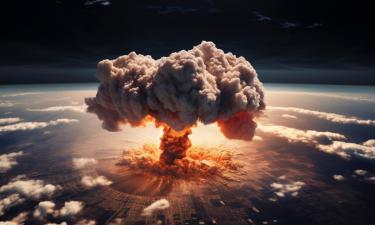Scientists: Ozone hole recovery may take longer than expected
The eventual recovery of the gaping ozone hole over Antarctica, first discovered two decades ago, may take years longer than previously predicted, scientists reported today. Researchers suspect that's because of all the older model refrigerators and car air-conditioning systems in the United States and Canada that are still releasing ozone-killing chemicals. Both countries curbed those chemicals in newer products.
If scientists are right, that means longer-term exposure to harmful ultraviolet radiation, which raises the risk of skin cancer and cataracts for people. Long-term UV exposure is bad for the biodiversity of the planet too.
Since the discovery of the ozone hole over the South Pole in the 1980s, satellites and ground stations have been monitoring it. Current computer models suggest the ozone hole should recover globally by 2040 or 2050, but Tuesday's analysis suggests the hole won't heal until about 2065.
Meanwhile, the lesser-damaged ozone layer over the Arctic is expected to recover by about 2040, according to new modeling done by John Austin of the National Oceanic and Atmospheric Administration.
Results were presented at an American Geophysical Union meeting in San Francisco. Measurements of ozone depletion vary every year, making it hard for scientists to predict the long-term effects of changes and how it may affect recovery.
The size of this year's Antarctic ozone hole rivaled the all-time biggest hole detected in 2003. In September, the hole over the South Pole peaked at about 10 million square miles (25.9 million square kilometers), or the size of North America. That was a notch below the 2003 record size of about 11 million square miles (28.5 million square kilometers).
Chlorofluorocarbons, or CFCs, in refrigerants, aerosol sprays and solvents have been largely blamed for most ozone depletion. Experts generally agree that the man-made chemicals are leveling off since more than 180 countries in the 1980s signed the Montreal Protocol, which phases out some CFCs and other ozone-damaging compounds such as chlorine and bromine. As a result, chlorine has declined in the lower atmosphere since the mid-1990s, while the growth rate of bromine has slowed.
But new research suggests that chlorine and bromine are not being depleted as fast as expected. In 2003, the ozone-depleting chemicals in the United States and Canada made up about 15 percent of total global emissions even though the two nations have stopped producing the chemicals.
It takes decades for these chemicals to dissipate and that may delay ozone hole recovery, said Dale Hurst, a research associate at the NOAA Global Monitoring Division, the AP reports.
New satellite images suggest that seasonal weather patterns may also affect ozone hole recovery. New observations by a NASA satellite found that chlorine converts into a more dangerous form in cold Antarctic winters, leading to ozone loss. Because conditions are warmer in the Arctic, the impact is not as profound. P.L.
Subscribe to Pravda.Ru Telegram channel, Facebook, RSS!





